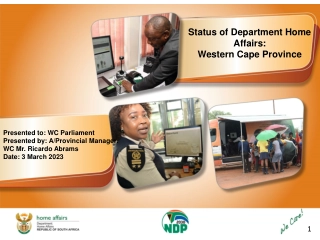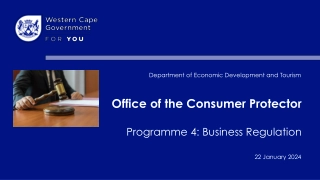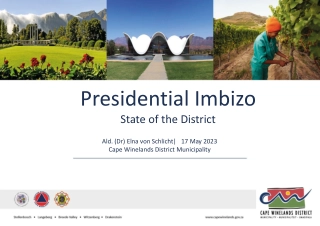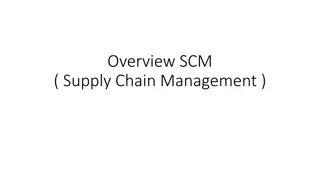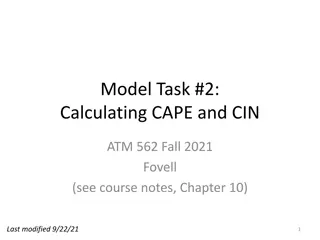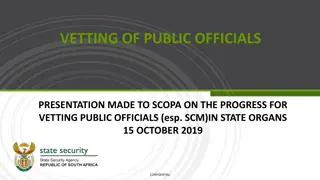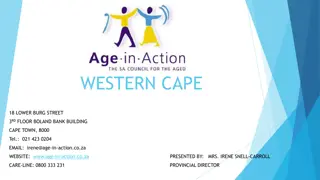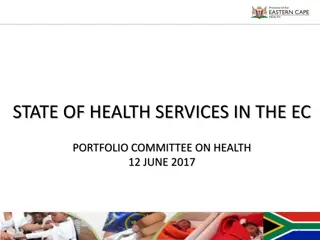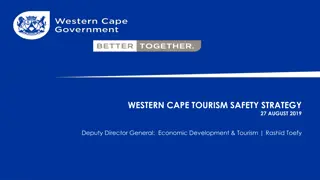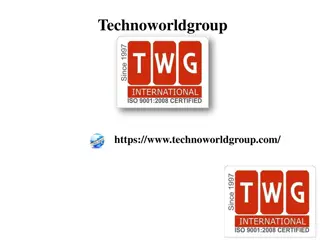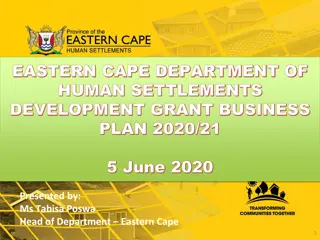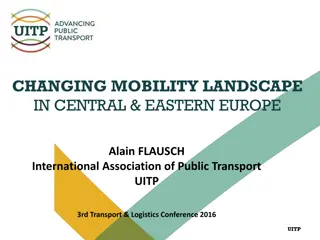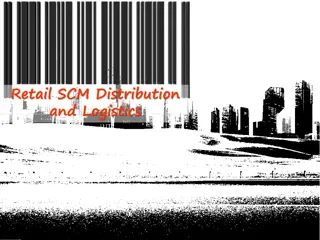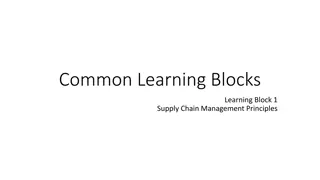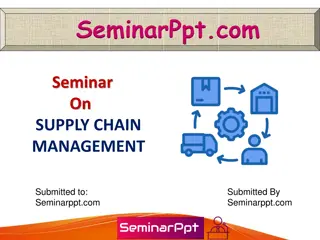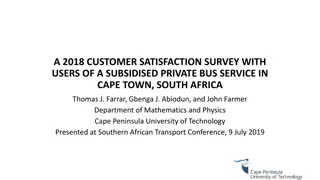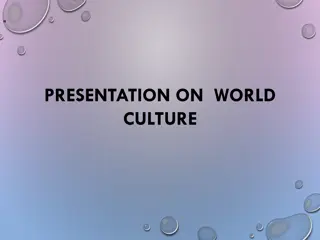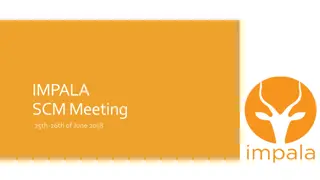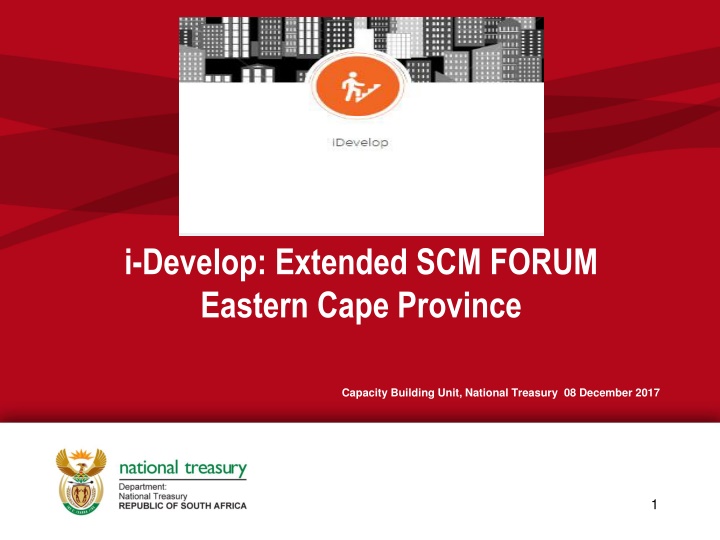
Capacity Development Strategy for Enhanced Financial Management
Discover how the Capacity Development Strategy (CDS) implemented by the Eastern Cape Province Capacity Building Unit of the National Treasury aims to strengthen the Public Financial Management (PFM) sector. From Competency Framework for Financial Management (CFFM) to the Integrated Talent Pipeline, learn about the strategies to develop a high-performance workforce and address competency gaps and skills shortages in PFM. Explore the key components such as talent pipeline management, competency assessment tools, career path development, recruitment, training, and more for sustainable stakeholder relationships.
Download Presentation

Please find below an Image/Link to download the presentation.
The content on the website is provided AS IS for your information and personal use only. It may not be sold, licensed, or shared on other websites without obtaining consent from the author. If you encounter any issues during the download, it is possible that the publisher has removed the file from their server.
You are allowed to download the files provided on this website for personal or commercial use, subject to the condition that they are used lawfully. All files are the property of their respective owners.
The content on the website is provided AS IS for your information and personal use only. It may not be sold, licensed, or shared on other websites without obtaining consent from the author.
E N D
Presentation Transcript
i-Develop: Extended SCM FORUM Eastern Cape Province Capacity Building Unit, National Treasury 08 December 2017 1
Background i. The Capacity Development Strategy (CDS) NT s strategy and plan of action to support the development of a high-performance PFM based on a range of diagnostics. ii. The Competency Framework for Financial Management (CFFM) Mirrors the CFO structure 9 Technical PFM disciplines 4 occupational roles Includes non-technical competencies (values and behaviours) iii. The Talent Pipeline Management Strategy National Treasury s Strategy for enhancing the Talent Pipeline for PFM Requires an assessment of competency gaps to assist with targeted development 2 2
Capacity Development Strategy (CDS) Capacity Development Strategy For PFM Four strategic objectives Support the development of an enabling environment Enhance organisational capacity Develop and empower a corps of competent and committed high- performance employees Create an environment that enables and sustains mutually beneficial stakeholder relationships. In order to address Inadequate levels of staff competence Skills shortage in the financial disciplines at the national level Qualifications and ETD solutions not suited to the operational realities of PFM The need to fast-track the professionalisation of staff Individual 3 3
Background Competency Framework for Financial Management (CFFM) The CFFM identifies and defines the major competency areas core, behavioural and technical The technical competencies are aligned to the CFO Generic Structure Knowledge and Skills areas are defined across 4 occupational roles CFO Generic Structure Competency frameworks are critical in the design of talent pipelines to ensure a steady flow of capable and motivated employees throughout the Treasuries and Departments . 4 4
Background cont. Integrated Talent Pipeline The development of a suite of competency assessment tools for PFM will be a key input to the components of the Talent Pipeline: COMPETENCY AND SKILLS DETERMINATION DEVELOPMENT OF A CAREER PATH RECRUITMENT SELECTION AND APPOINTMENTS TRAINING AND DEVELOPMENT Recruitment and selection Development of a career path Succession planning Performance management Training and development INTEGRATED TALENT PIPELINE FOR PUBLIC FINANCIAL MANAGEMENT SUCCESSION PLANNING RETENTION PLANNING PERFORMANCE MANAGEMENT 5 5
What is i-Develop? i-Develop is an online assessment tool that: Assists PFM practitioners to identify their learning and development needs Guides the prioritisation of actions and ETD solutions to address those needs The Assessment Process: Is practitioner-driven Requires a Supervisor verification and an agreed assessment to identify learning needs Supervisor Assessment Agreed Assessment Learning Needs Self-Assessment 6 6
What you need to know at a glance - - - STAR Proficiency v/s Importance Quadrant Analysis Subject-Matter Experts PFM Practitioners Review Sign-off Competency Statements: - Technical - Core - Behavioural STAR TCDs Load Toolkit ASSESSMENT: - Self - Supervisor - Agreed TALENT MANAGEMENT: - Learning & Development - Structure - Job descriptions - Career paths - Recruitment - Etc Im[portance ASSESS MAINTAIN Raw Data NEEDS ANALYSIS Reporting - Individual - Departmental - Provincial Proficiency MONITOR TARGET 7 7
Assessment Methodology Two Dimensions: Proficiency vs Importance Proficiency The person The job Is required, not required in my job The degree to which the practitioner is able to demonstrate the competency The degree to which the competency is relevant to the practitioner s role Competency Statements I am able to, not able to Importance Proficiency is understood by: Knowledge Exposure Supervision There are 6 levels of proficiency Importance is understood by the degree of relevance of the competency to the role. There are 4 levels of relevance 8 8
Design Principles - Proficiency Degree of Proficiency Level Definitions 1 Basic awareness -I have a basic awareness of this competency -I have limited or no exposure to work situations requiring this competency -I need detailed instructions and / or close supervision in order to demonstrate this competency 2 Fair understanding -I have a fair understanding of this competency -I have some exposure to work situations requiring this competency -I need clear procedures and / or supervision in order to demonstrate this competency 3 Practical understanding -I have a practical understanding of this competency -I have frequent exposure to work situations requiring this competency -I need broad guidelines and / or minimal supervision in order to demonstrate this competency 4 Skilful application -I have the required knowledge of this competency -I am fully exposed to work situations requiring this competency -I demonstrate this competency routinely without supervision 5 Advanced -I have an advanced knowledge of the concepts and techniques that underpin this competency -I have exposure to a variety of work situations requiring this competency -I am confident to demonstrate this competency for others 6 Expert -I have an in-depth knowledge of the concepts and techniques that underpin this competency -I have exposure to new and complex situations requiring this competency -I am comfortable to coach and / or train others in this competency 9 9
Assessment MethodologyImportance Level Degree of relevance Definition -This competency is irrelevant to my job. -I am not required to demonstrate any knowledge of this competency. -This competency has some relevance to my job -I am sometimes required to demonstrate an understanding of this competency -This competency is relevant to my job. -I am frequently required to demonstrate an understanding of this competency -This competency is critical to my job. -I am constantly required to demonstrate this competency. 1 Irrelevant 2 Some relevance 3 Relevant 4 Critical 10 10
Assessment Screen 11 11
Understanding Competencies The ability to undertake specific tasks Concerned with what people can do, rather than what they know Concerned with doing, therefore must have a context Describes what someone can do, not the learning process the individual has undergone A measure of what someone can do at a particular point in time. 12
Quadrant Analysis InterpretingImportance and Proficiency scores Competency Assessment Matrix 6 MAINTAIN (Proficiency 4 Importance 3) ASSESS (Proficiency 4 Importance 2) -To be developed through stretch assignments -Potential pool of coaches, mentors & trainers that may require non- technical training -HR strategy: assess importance of the skills & competencies for the future -Assess need for redeployment / transfer Level of Proficiency 4 MONITOR (Proficiency 3 Importance 2) TARGET (Proficiency 3 Importance 3) 3 -No immediate action required -HR strategy: monitor evolution of job roles, technology and structure in the long term -Requires immediate attention; priority areas for developmental activities in the short & medium terms -May require a mix of learning approaches 1 1 2 3 4 Level of Importance 13 13
The Benefits Align Departmental Training Budget to Identified Needs Build A Learning Culture Develop Career Paths Develop Organizational Structure That Support Career Paths Develop Cost Effective Targeted Training & Development to Meet Organizational Needs Well-Trained and Motivated Employees, Reducing Turnover Develop Personal Development Plans to Address the Training Needs Identified Implement the Training Plan (job shadowing, mentoring & coaching) Monitor Progress against the Plan (by referring back to the tool) 14 14
Roll-out Plan 2017/18 The Project has Been Planned to be Roll-out in the Following Provinces: Gauteng KZN and Eastern Cape The Focus Will be on the Following PFM Disciplines: SCM, Risk Management and Internal Audit. 15 15
Where are We? Progress to date: Inception Meeting with the PT completed: October 2017 One Day Workshop Session: 13th Nov 2017 Competency Statements Workshops (14th 16th Nov 2017) HRD Skills Transfer Workshop: 17th Nov 2017 16 16
Implementation Phase Scheduled Dates: Feb March 2018 Self-Assessment Supervisors Assessment Agreed Assessment Project Close-out Reports: March 2018 PT Management Team Discipline Champions and HRDs 17 17
THANK THANK YOU YOU Jeff Hlongwane Directorate: PFM Capacity Building Office of the Accountant-General Tel: 012-395 6625 Cell: 0823855163 Email: jeffrey.hlongwane@treasury.gov.za 18 18

